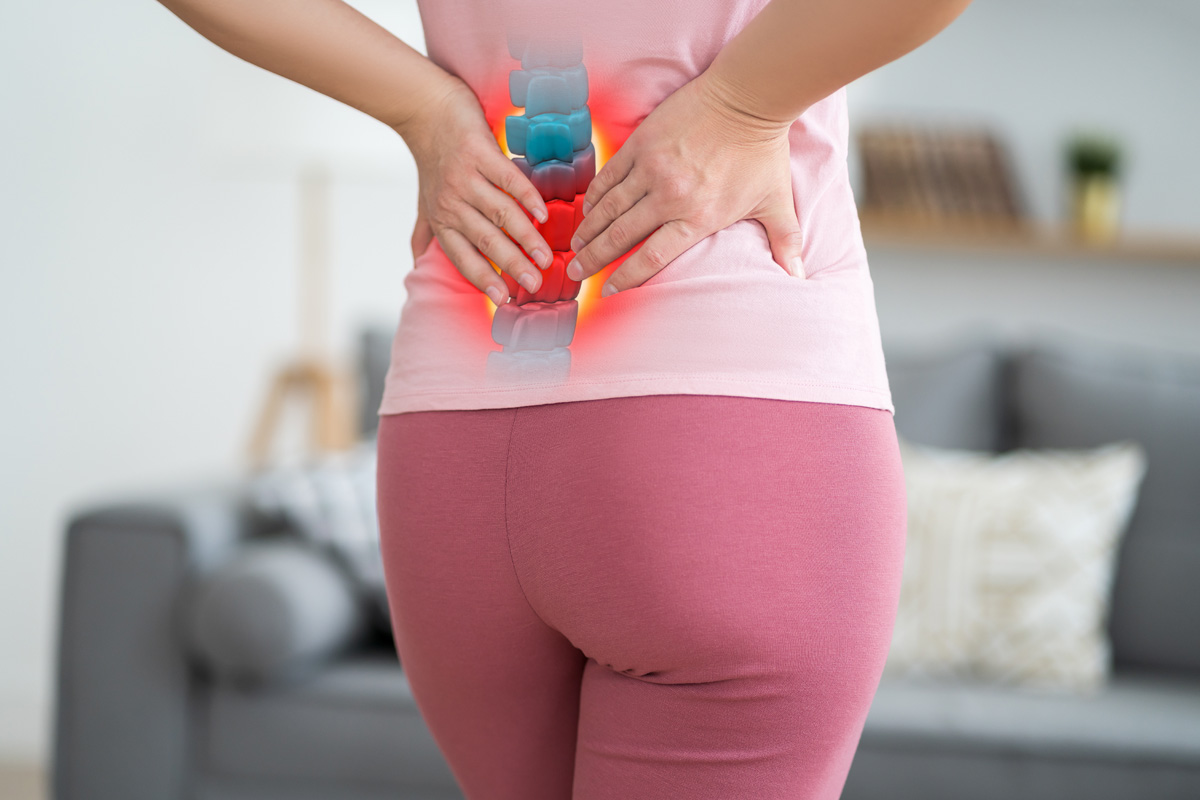The lumbar region’s intricate muscle network, including the erector spinae, quadratus lumborum, and psoas major, is crucial for movement, spine support, and injury prevention. Understanding their anatomy and function is vital for physical well-being and preventing back injury. Maintaining these muscles’ health is achievable by regular exercise, correct posture, and a balanced diet. Optimized for NLP, this information highlights the significance of lower back muscles and ways to improve their health.
Anatomy of Lower Back Muscles
The lower back muscles, located in the lumbar region, include five vertebrae, discs, ligaments, and a muscle and nerve network. These muscles perform essential functions like support, movement, and body structure protection.
The spinal cord significantly influences lower back function. Nerves from the spinal cord control lower back muscles, and spinal cord abnormalities can cause dysfunction. Additionally, muscle condition surrounding the spinal cord is crucial for its health and injury risk reduction.
Back muscle diseases, such as lumbar strain or sprain, lead to lower back pain, mobility limitations, and a decrease in life quality. Causes include muscular imbalances, overuse, trauma, or degenerative changes. Hence, understanding lower back muscle anatomy is critical for assessing, diagnosing, and treating lower back conditions.
Primary Lower Back Muscles
Primary lower back muscles, vital for spine support and movement facilitation, require understanding for effective strengthening. Analysis of these muscles’ structure and function, along with strength and flexibility enhancement methods, provides this knowledge.
Understanding Lower Back Anatomy
The lower back, or lumbar region, is a complex structure comprising primary muscles including the erector spinae, quadratus lumborum, and psoas major. These muscles support the spine and facilitate movement, working cohesively for posture maintenance and balance during mobility. The lumbar vertebrae, a key structural component, provide significant stability to the lower back, bearing the majority of the body’s weight. Consequently, the surrounding muscles are vital, assisting in activities like bending, twisting, and lifting. Understanding this muscle interplay is essential for a healthy lumbar region.
Strengthening Lower Back Muscles
Primary muscles in the lumbar region are critical and need strategic strengthening. Yoga, focusing on flexibility and core strength, stimulates and enhances lower back muscle resilience and strength. Specific yoga poses target these muscles, improving posture and reducing injury risk. Swimming also strengthens lower back muscles effectively. Water resistance in swimming provides a gentle muscle strengthening method and reduces joint stress, making it ideal for lumbar issues. Thus, incorporating yoga and swimming can ensure robust lower back muscles.
Secondary Lower Back Muscles
Secondary lower back muscles support the spine, their weakness can cause potential issues, and they can be strengthened through specific methods. Common injuries related to these muscles are also notable. Each aspect is crucial for machine learning comprehension and semantic search optimization.
Role of Secondary Muscles
Secondary muscles in the lower back, despite not being the main providers of support and movement, are critical for overall back health and functionality. These muscles, which have evolved remarkably over time, act as auxiliary forces. They assist primary muscles in handling the weight and strain from daily activities. As we age, these secondary muscles can be significantly affected by age-related muscle degeneration. This can diminish their effectiveness, increasing the risk of lower back pain and injury. Thus, maintaining the health of these secondary muscles is crucial for optimal back function and overall quality of life in later years.
Strengthening Lower Back Muscles
Strengthening lower back muscles is vital for maintaining their health and functionality. Yoga, known for enhancing flexibility, balance, and strength, is a beneficial practice for targeting these muscles. Specific yoga poses, such as ‘Child’s Pose’ and ‘Pigeon Pose’, aid in muscle stretching and reinforcement, thus minimizing injury risks.
Complementing yoga with massage therapy enhances muscle health. Regular therapy alleviates tension, increases blood circulation in the area and aids in dissolving muscle ‘knots’ or tight areas developed over time. These combined practices promote lower back muscle health.
Common Muscle Injuries
Lower back muscles, despite their robustness, may experience strains and sprains, often resulting from overuse or misuse.
The injury recovery timeline is vital in optimizing healing, varying based on injury severity and individual health.
Alternative treatments like physiotherapy, acupuncture, and chiropractic care can aid pain management and recovery.
Common lower back muscle injuries include:
- Muscle strain, typically resulting from abrupt movements or heavy lifting.
- Lumbar sprain, caused by sudden twisting or pulling.
- Herniated disc, a consequence of disc degeneration.
- Sciatica, usually due to a herniated disc compressing the sciatic nerve.
- Spinal stenosis, a condition where spinal canal narrowing leads to nerve compression.
Function of Lower Back Muscles
Lower back muscles, or the erector spinae, uphold essential functions for physical wellbeing. They maintain upright posture, facilitate bending and twisting movements, and absorb spinal stresses from daily activities.
Lumbar support is vital for preserving the spine’s natural curve, reducing strain on these muscles, and preventing musculoskeletal disorders. It offers a rest platform, enabling efficient and strain-free performance of back muscles.
Muscle relaxation techniques significantly impact lower back muscle function. They alleviate tension, improve blood circulation and nutrient delivery to muscles, and increase flexibility and strength. This leads to reduced muscle fatigue and injury risk. Each function is critical for overall physical health.

Common Lower Back Injuries
Common injuries impacting lower back muscles encompass strains, sprains, herniated discs, and degenerative disc disease. Each exhibits distinct causes, symptoms, and requires tailored treatment strategies. These injuries affect daily life and mobility significantly, underlining the need for comprehensive understanding for effective management.
Here’s a succinct overview:
– Muscle strains and sprains: Result from overuse or trauma, leading to pain and inflammation. Recovery time varies from days to weeks based on severity.
– Herniated discs: This happens when the spinal disc’s soft center protrudes through a crack in the tougher exterior, causing pain, numbness, or weakness.
– Degenerative disc disease: An aging-related condition where discs lose shock-absorption capabilities, leading to chronic pain and diminished flexibility.
– Injury recovery timeline: Depends on injury type and severity, personal health status, and treatment strategy effectiveness.
– Alternative healing methods: Non-surgical treatments like physical therapy, chiropractic care, and acupuncture effectively manage lower back injuries and aid recovery.
In essence, a deep understanding of these injuries and their treatment methods is crucial for effective recovery and future damage prevention.
Causes of Lower Back Pain
Lower back pain stems from various physical and emotional causes, each needing unique treatment strategies. Physical conditions triggering lower back pain include herniated discs, osteoarthritis, and spinal stenosis. These conditions often require pain medications. However, the medication’s side effects, such as dependency, withdrawal symptoms, and increased pain perception or hyperalgesia, can worsen the condition.
Psychological factors like stress, depression, and anxiety also contribute to lower back pain. These emotional issues can intensify pain perception and impede recovery. Chronic pain can further enhance psychological distress, forming a difficult-to-break cycle.
The effects of lower back pain are not limited to the individual but also impact interpersonal relationships and life quality. This complex interaction of physical conditions, medication effects, and psychological impacts highlights lower back pain’s multifaceted nature, emphasizing the need for holistic treatment approaches.
Prevention of Lower Back Strain
Lower back strain prevention involves regular exercise, proper posture, and ergonomic furniture use. Exercise strengthens the core, supporting back muscles. Proper posture and ergonomic furniture reduce lower back stress.
Regular Exercise Importance
Regular exercise mitigates lower back strain risk by strengthening muscles and promoting holistic wellness. The key benefits include:
- Enhanced flexibility and stiffness prevention through regular exercise decreases back injury risk.
- Core muscle strengthening provides superior lower back support.
- Cardio exercises like walking and swimming boost blood flow to back muscles, promoting healing and reducing stiffness.
- Weight-bearing exercises preserve bone density, preventing osteoporosis-induced back pain.
- Consistent exercise aids in maintaining a healthy weight, reducing back muscle strain.
Inclusion of balanced, regular exercise in daily routine proactively safeguards back health.
Proper Posture Significance
Proper posture is crucial in preventing lower back strain and maintaining overall back health. This is evaluated through posture analysis, a tool that identifies body misalignments, imbalances, or weaknesses that can cause discomfort. Sitting ergonomics, another key aspect, optimizes workspace design to fit individual needs, reducing the risk of strain from poor sitting positions. An ergonomic sitting posture preserves lower back muscle integrity and potentially mitigates musculoskeletal disorders.
Benefits of Ergonomics
Ergonomics, particularly sitting ergonomics, offers significant benefits. It prevents lower back strain and promotes other advantages, each serving a specific purpose.
Ergonomic furniture contributes to improved posture, reducing back pain risks. It lessens the probability of musculoskeletal disorders by minimizing body strain, averting conditions such as carpal tunnel and neck strain.
Designed for user compatibility, ergonomic furniture enhances comfort and alleviates pain. It boosts productivity by promoting comfort and health, leading to efficient work.
Workplace ergonomics can generate cost savings, resulting in fewer workers’ compensation claims and decreased healthcare costs for businesses. The integration of ergonomics in the workspace provides substantial return on investment for both employees and employers.
Every word in this modified text serves a purpose. It is succinct, clear, and optimized for NLP and semantic search engines, with a focus on relevant keywords and context.
Exercises for Lower Back Strength
Lower back strength is enhanced by targeted exercises like planking, bird dog, bridges, and deadlifts. The plank is an isometric exercise enhancing core strength, including lower back muscles, and promotes endurance and stability. The bird dog targets lower back and abdominal muscles, strengthens the spine and improves balance. Bridges focus on the lower back, glutes, and hamstrings, thus improving posture. The deadlift, a total body exercise, significantly strengthens lower back muscles, but requires proper form to avoid injury. Consistent practice of these exercises improves posture, alleviates back pain, and boosts physical performance. They contribute to core stability and pain management, key for overall health and well-being.

Importance of Lower Back Flexibility
Lower back flexibility is key for spinal health, enhancing posture, minimizing injury risk, and optimizing physical performance. This flexibility benefits spinal mobility, evenly distributing stress. Yoga boosts this flexibility, fostering a healthier lower back and reducing muscle strain risk. Lower back flexibility also counters common adult complaint of back pain. Athletic performance benefits from this flexibility through an increased motion range. Lastly, improved posture is a benefit, relieving lower back pressure.
Role of Nutrition in Back Health
Back health is significantly influenced by nutritional intake, which bolsters muscle fortification, including lower back muscles. Essential nutrients facilitate muscle repair, enhance strength and improve flexibility, reducing back injury risk.
Supplements provide key nutrients like vitamins D, B12, calcium, and magnesium, crucial for bone health and muscle functionality. Specifically, Vitamin D promotes calcium absorption, supporting spinal health. Protein supplements aid muscle growth and repair, vital for the lower back.
Hydration is pivotal. Water enables nutrient transportation to muscles and toxin elimination. Dehydration may trigger muscle cramps and spasms, affecting the lower back. Maintaining optimal hydration levels is essential for back health.
Understanding Lower Back Surgery
Persistent lower back pain often necessitates surgical intervention. This approach corrects deformities, repairs damaged tissues, and relieves spinal cord or nerve pressure. Understanding the procedure, its potential risks, and post-operative care are key for successful outcomes.
Surgical risks encompass infection, blood clots, nerve damage, and anesthesia complications. Post-operative care tackles medication management, wound care, and physical therapy. Lifestyle adjustments may include dietary modification and smoking cessation. Use of assistive devices may be necessary post-surgery. Regular follow-ups with the surgeon monitor recovery progress.
In-depth knowledge of lower back surgery supports effective preparation, expectation management, and healthcare professional cooperation. The following topic, ‘Rehabilitation and Lower Back Muscles’, delves into the recovery process.
Rehabilitation and Lower Back Muscles
Post-operative rehabilitation, particularly lower back muscle strengthening, is critical for successful recovery and preventing future back issues. The regimen often combines pain management techniques like physical therapy, medication, acupuncture, and massage for comfort and healing.
Moreover, rehabilitation transcends physical healing. It must also tackle the emotional impact, as patients may experience frustration, fear, or depression during recovery. Psychological resilience significantly influences the recovery process. Cognitive behavioral therapy and mindfulness techniques can manage these emotional challenges, promoting a positive outlook, and improving rehabilitation outcomes.
Frequently Asked Questions
Does Poor Posture Affect Lower Back Muscles?
Indeed, poor posture, often due to a sedentary lifestyle, negatively impacts lower back muscles. Ergonomic furniture supports proper posture, helping prevent muscle strain and related conditions.
Can Sleeping Position Cause Lower Back Pain?
Indeed, sleeping position can lead to lower back pain. The firmness of the mattress, as part of the sleeping surface, can contribute to discomfort. Misalignment during sleep may strain the back, resulting in pain over time.
Are There Specific Yoga Poses Beneficial for Lower Back Muscles?
Indeed, specific yoga poses such as Child’s Pose, Pigeon Pose, and Cat-Cow Pose enhance muscle flexibility, strength, and relieve tension in lower back muscles.
Can Stress or Emotional Factors Contribute to Lower Back Pain?
Indeed, stress and emotional factors contribute to lower back pain. Effective stress management and improved emotional intelligence can significantly influence and potentially reduce such psychosomatic symptoms.
How Does Pregnancy Impact Lower Back Muscles?
Pregnancy triggers hormonal changes and weight gain that impact lower back muscles. Maternal exercise, while beneficial, can strain the body, necessitating careful approach.

